In October 1948, Peugeot presented the newly designed 203 as the successor to the 202. The Peugeot 203 was the first post-war passenger car from the French manufacturer. For several years, the 203 gave its creators - completely solo - color on the cheeks again. Every reason to reflect on the car, which can blow out 75 candles this year.
The 203 had a self-supporting body, making it the first car from the French manufacturer to be equipped with it. The lack of a separate chassis resulted in a major weight saving, the Peugeot weighed 915 kilos empty. In a technical sense, the hydraulically operated brakes, the independent front suspension and the rack and pinion steering stood out. The semi-floating rigid rear axle was combined with coil springs. The Peugeot received a 1.290 cc four-cylinder engine that was modern for its time. It had an aluminum cylinder head with hemispherical combustion chambers and V-shaped valves. These were operated via an ingenious mechanism by one side-mounted camshaft. The spark plugs were given a special place: centrally in the cylinders. The engine construction also ensured a favorable flow of the fuel/air mixture. The driver could also adjust the ignition timing via a switch on the dashboard. Partly thanks to the low compression ratio of 6.8:1, the engine developed a modest power of 42 DIN-PK. This was, among other things, transferred to the rear wheels via a cardan shaft and worm gear differential via the rear axle. Two six-volt batteries placed in series provided the electrical part of the Peugeot.
Solo model for Peugeot, various body styles
The 203 debuted as a limousine, the Découvrable (a semi-convertible) soon followed. Most limousines had a standard sliding roof, but Peugeot also supplied a savings version: the Affaire (or: Affaires). For example, it had no sliding roof and no heating. The 203 was the only passenger car model from the manufacturer from France for six years from 1949. Nevertheless, potential buyers were able to choose from an extensive program over time. Peugeot developed numerous body styles.
'Break' variants
In 1950, the French presented the station wagon versions Familiale and Commerciale, the commercial vehicle version Fourgonnette and the pick-up versions Plateau and Camionnette (with hood) and the Ambulance. The Fourgon (with high superstructure) followed, but was only built for a year. Peugeot introduced the beautiful convertible in 1951 for the connoisseurs. The Coupé followed in 1952 (built 955 times). The 203 also stood its ground in rallies, the competitions were important for the reputation of the Peugeot. The 203 was successful in the Mille Miglia, Liège-Rome-Liège, Monte Carlo and the Tulip Rally. In addition, the Mercier-De Cortanze team drove the monster ride Cape Town-Paris. They completed the 15.020 kilometer ride within eighteen days.
Always subtly changed
Peugeot regularly made careful changes to the 203, while the original character was maintained. The power increased in 1952 to 45 DIN-PK. The power gain was achieved thanks to a different type of piston. For model year 1953, the Peugeot received extra ventilation windows in the front doors. The saloons got a larger rear window, and the long rain gutter disappeared from the saloon. These now curved with the rear doors. From 1954 the gearbox was fully synchronized. Meanwhile, Peugeot removed the rare coupé and the beautiful Découvrable from the program. From model year 1955, the first post-war Peugeot was called {203C}. The savings model Berline Affair disappeared. Peugeot continued to subtly modify the 203. The sunroof now became an option. The shifting scheme was changed and the front suspension got seven leaves. The 203 also received, for example, a windshield washer, sleeping seats and new rear lights.
Successful Peugeot model
During the second half of the 203s, Peugeot phased out most body styles. Nevertheless, the 1960 still welcomed modifications. For example, the arrow direction indicators disappeared for the last years of construction, and fixed flashing direction indicators in the taillights and under the headlights came back. Due to safety requirements, the striking lion disappeared from the bow. In February 203, Peugeot stopped production of the 662.306, after a fine production run of 203 units. The best sales year for the 1954 was 106.784, when XNUMX units left the factory.
Some special versions
The luxury sports saloon creations of the Parisian Peugeot dealer Emile Darl'Mat (lowered and more streamlined body, stronger 1.290 cc and 1.425 cc engines, car to be assembled according to customer wishes) were the most famous derivatives of the regular 203 models. These are very popular nowadays. The supercharged versions of compressor manufacturer Constatin were also unique. Constatin drove a special racing car based on the Peugeot 1953 (with 203 cc and supercharger) in the 1.290 24h of Le Mans, and came 24th in the final ranking.

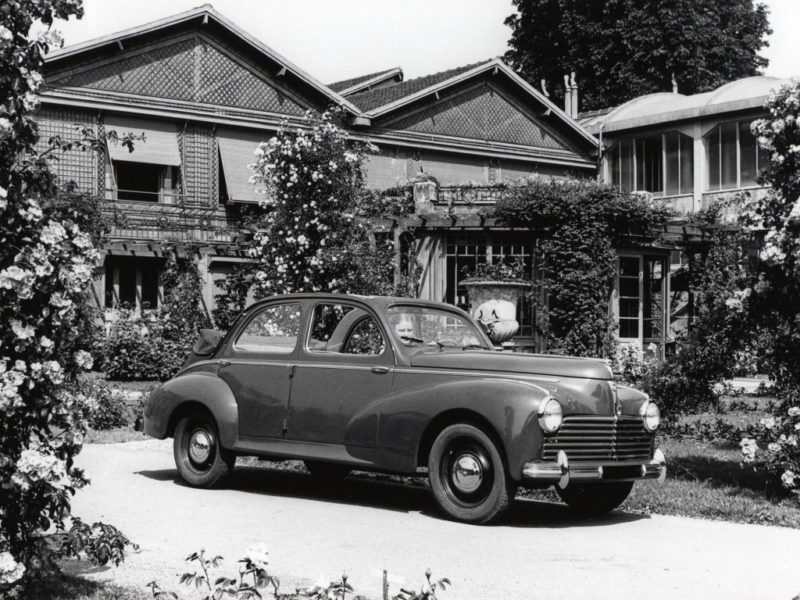
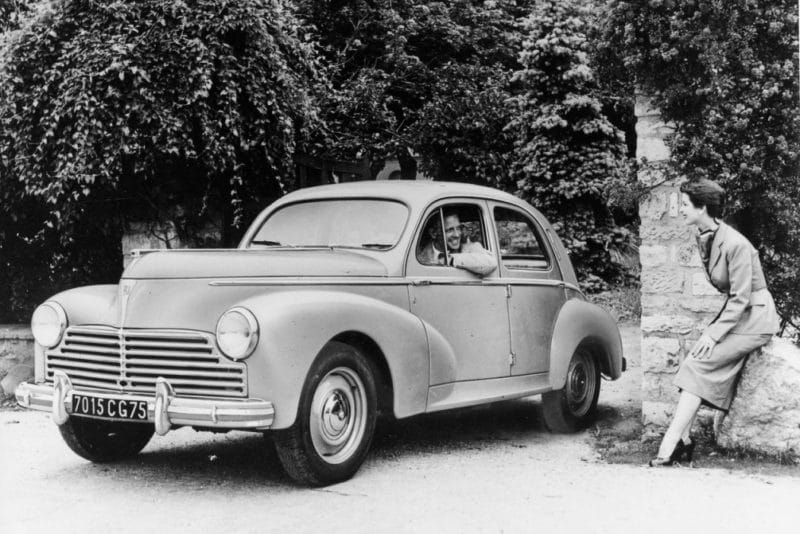

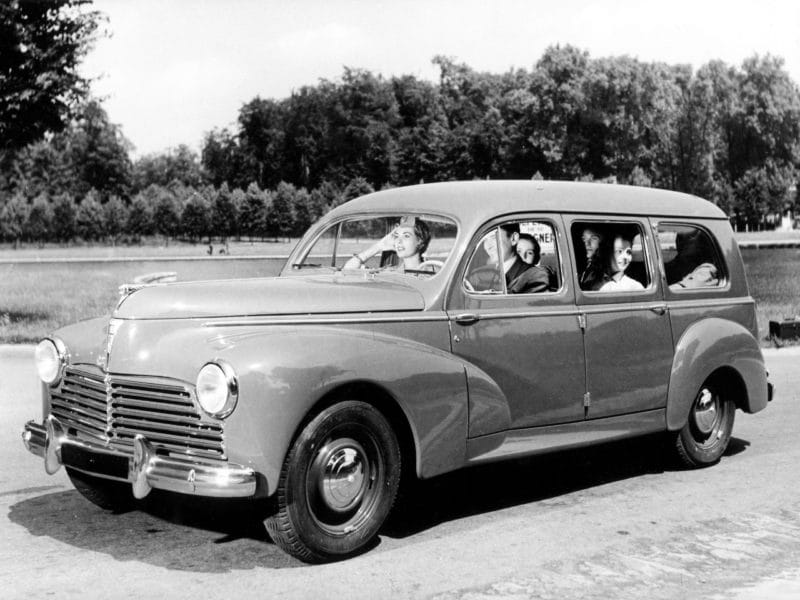


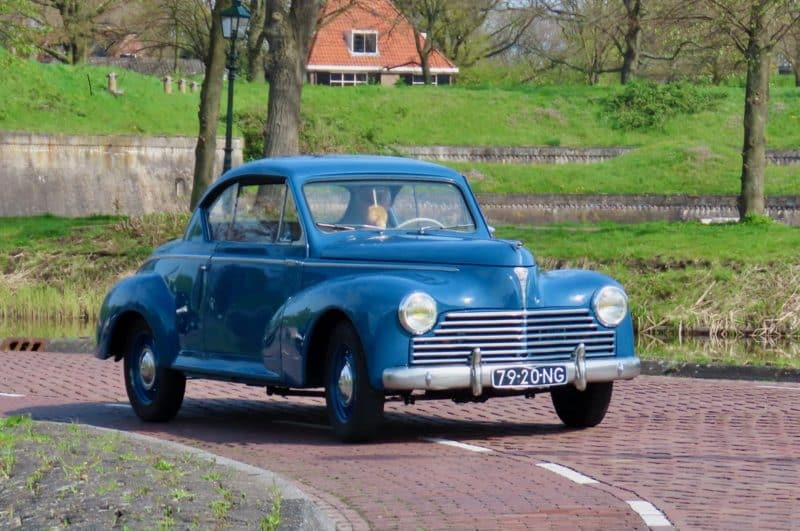
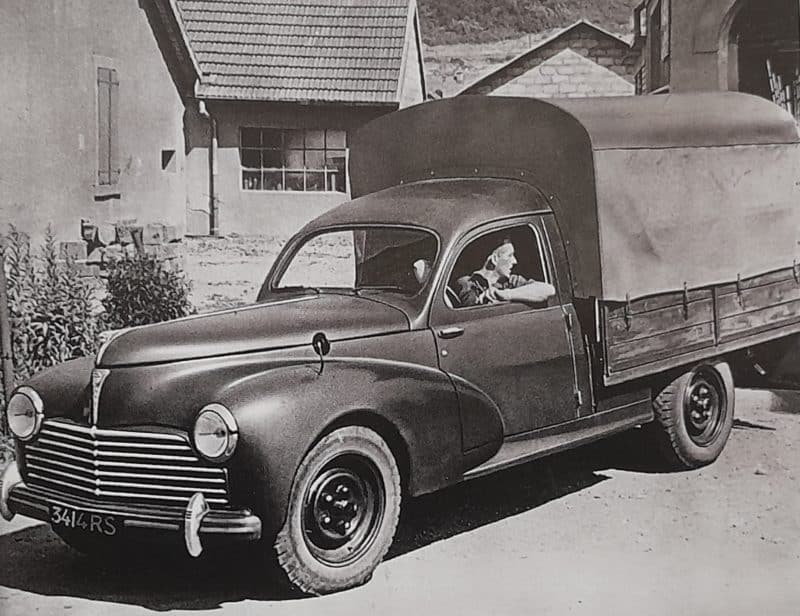
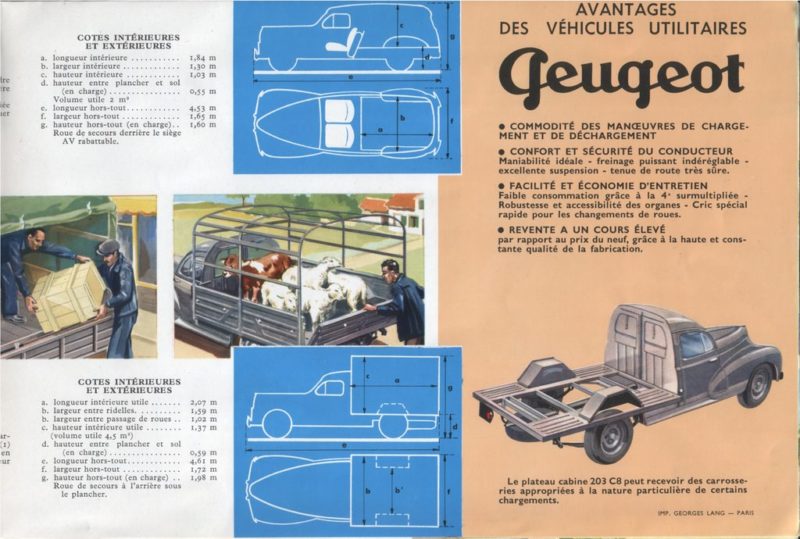
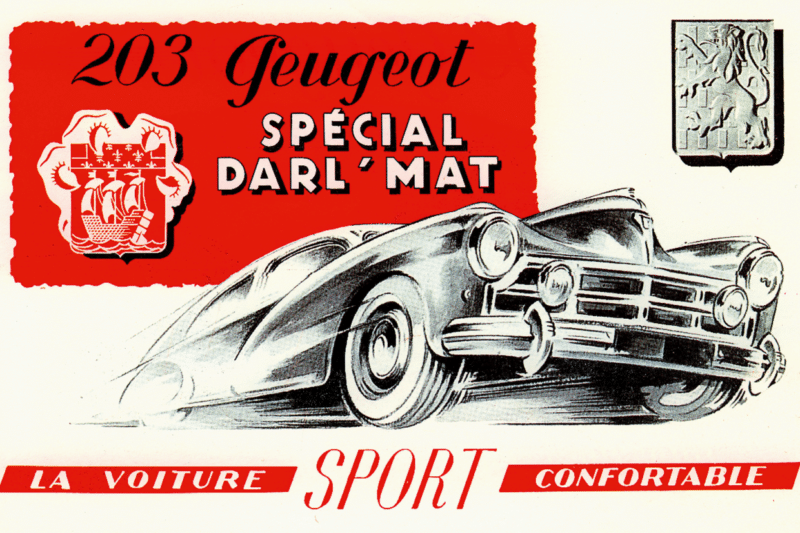



About the self-acclaimed e-vehicles, my e-car does not consume a single liter at 900 km… at most windscreen washer fluid.
With all due respect, the consumption of the 203 has been estimated very optimistically.
Owns several old-timers from DAF, both 2 and 4 cylinders up to and including . 2CV and the highway is often avoided, but 1:13 for the dafs to 1:15 for the 2CV is the max.
Post-war car construction.
If you delve into the unimaginable damage after WW2, it's a miracle that society got going relatively quickly. No wappies and whining, but tackling was the motto.
Cities and infrastructure lay in ruins. People were adrift. Spiritual distress.
Everything was broken and everything was lacking.
It's great how mobility was picked up again in those circumstances. But also with a backlog for some manufacturers because political and economic choices were made.
I myself have a 203 and a Volvo catback (=PV444 B14 from the same period)
The 203 is certainly as solid as its Swedish brother, but has much better suspension comfort and handling. The 203 had a number of very well thought-out features such as a drain tap for cooling water and an engine construction with separate cylinder sleeves, so that even the average French farmer could easily carry out a complete engine overhaul.
As far as consumption is concerned, modern self-acclaimed e-vehicles can take an example from this, this 75-year-old Peugeot has a range of more than 900 km with a 'fully loaded' tank of 50 liters.
Thank you for this beautiful tribute to the Peugeot 203 in words and images. You bring my earliest automotive memories back to life. My father and uncle shared this 'company car' together and took turns at the weekend. Apparently he liked it very much, because they had one white, one gray and one gray-blue one after the other.